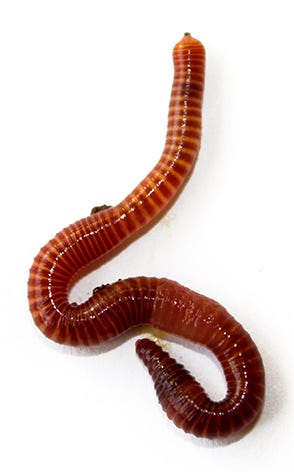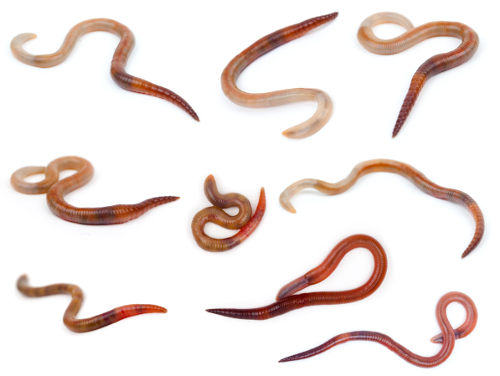The Ultimate Guide to Taking Care Of Red Wigglers in Your Garden
Caring for red wigglers in your garden is a vital element of lasting composting techniques that can considerably improve soil health and fertility. Understanding their particular environment requirements, nutritional preferences, and maintenance requirements is vital for cultivating an effective vermicomposting setting.
Recognizing Red Wigglers

Red wigglers are characterized by their reddish-brown coloration and fractional bodies, which can grow up to 4 inches in size. They have a high reproductive rate, generating cocoons that have several embryos, dramatically increasing their populace in ideal habitats. Where to buy red wigglers. Their physiology permits them to tolerate numerous moisture levels, although they prosper in damp conditions, ideally in between 60 ° F and 80 ° F.))

Establishing Up the Environment
Developing an optimal habitat for red wigglers is vital for maximizing their composting efficiency and overall wellness. An appropriate environment consists of variables such as bed linen, temperature, and moisture materials. Red wigglers prosper in a damp, dark atmosphere with a temperature series of 55 to 77 levels Fahrenheit. It is essential to monitor these problems very closely, as extreme temperatures can impact their activity and reproduction.
When choosing a container, select one that is well-ventilated to allow for air flow while avoiding excess moisture loss. Plastic bins, wooden boxes, or specialized worm containers are all efficient choices. The bottom of the container ought to have water drainage holes to protect against water build-up, which might cause anaerobic problems harmful to the worms.
Consistently check the moisture level of the bed linens, and include water as essential to preserve the perfect dampness. By establishing these problems, you will certainly produce a growing setting for your red wigglers, urging reliable composting and much healthier worm populaces.
Selecting the Right Food
Choosing the ideal food for red wigglers is vital for their health and wellness and composting effectiveness. These worms flourish on a balanced diet that includes a selection of organic products. Perfect food resources include fruit and veggie scraps, coffee premises, smashed eggshells, and shredded paper. It is necessary to avoid meats, dairy products, and oily foods, as these can attract parasites and produce unpleasant odors in the composting atmosphere.
Red wigglers like food that is sliced or shredded, as this increases surface location and advertises a lot more efficient digestion. Furthermore, presenting food in small quantities stops overfeeding, which can result in anaerobic problems damaging to worm wellness. Keeping track of the worms' eating practices can likewise give insights; if the food is eaten rapidly, think about slowly boosting the quantity.

Maintaining Wetness and Temperature
A balanced diet plan is only part of the formula when it concerns ensuring the health of red wigglers; maintaining proper dampness and temperature is similarly crucial. Red wigglers thrive in a damp setting, ideally between 70-85 ° F(21-29 ° C) This range sustains their metabolic processes and enhances their capability to decay raw material effectively.
Alternatively, extreme wetness can create anaerobic problems, which might damage the worms and generate undesirable smells. On a regular basis inspecting the wetness material and changing as required is vital for a thriving worm population.
To alleviate temperature extremes, take into consideration utilizing insulation for outdoor bins or moving the bin to a temperature-controlled or shaded area. By carefully taking care of both wetness and temperature level, you develop an optimal setting for red wigglers, enhancing their performance and general health.
Harvesting Compost and Treatment Tips
Harvesting garden compost from your red wigglers is a rewarding process that not only advantages your yard yet likewise enhances the efficiency of your worm container - Where to buy red wigglers. To begin, pick a harvesting method that matches your configuration-- whether it's the tray, pyramid, or conventional bin technique. Each method enables the separation of compost from worms effectively
To harvest, you can gently dig deep into the garden compost from one side of the container, allowing worms to migrate to the uninterrupted side. You can make use of light to motivate worms to delve deeper, making it simpler to accumulate the ended up garden compost.
Care pointers after harvesting include renewing your worm container with fresh bed linens and food scraps to maintain a healthy worm populace. Ensure that the wetness and temperature degrees stay optimum, and regularly keep track of for any kind of signs of distress among the worms. By complying with these methods, you'll make sure a lasting cycle of garden compost production that enhances your garden.
Final Thought
In conclusion, the read more effective treatment of red wigglers requires a comprehensive understanding of their habitat, nutritional demands, and ecological conditions. Developing an appropriate habitat with correct air flow and moisture degrees is necessary for promoting their health and performance.
By establishing these conditions, you will certainly create a successful setting for your red wigglers, urging effective composting and healthier worm populaces.
The pH level of the food is another vital factor; red wigglers thrive in a somewhat acidic to neutral environment.A well balanced diet is only part of the formula when it comes to guaranteeing the wellness of red wigglers; preserving correct wetness and temperature level is equally essential. By thoroughly taking care of both wetness and temperature level, you produce an optimum environment for red wigglers, improving their productivity and general wellness.
Gathering garden compost from your red wigglers is a gratifying process my sources that not just benefits your yard yet likewise boosts the efficiency of your worm bin.
Comments on “Get Red Wigglers with Free Shipping to Enhance Your Gardening and Composting Efforts”